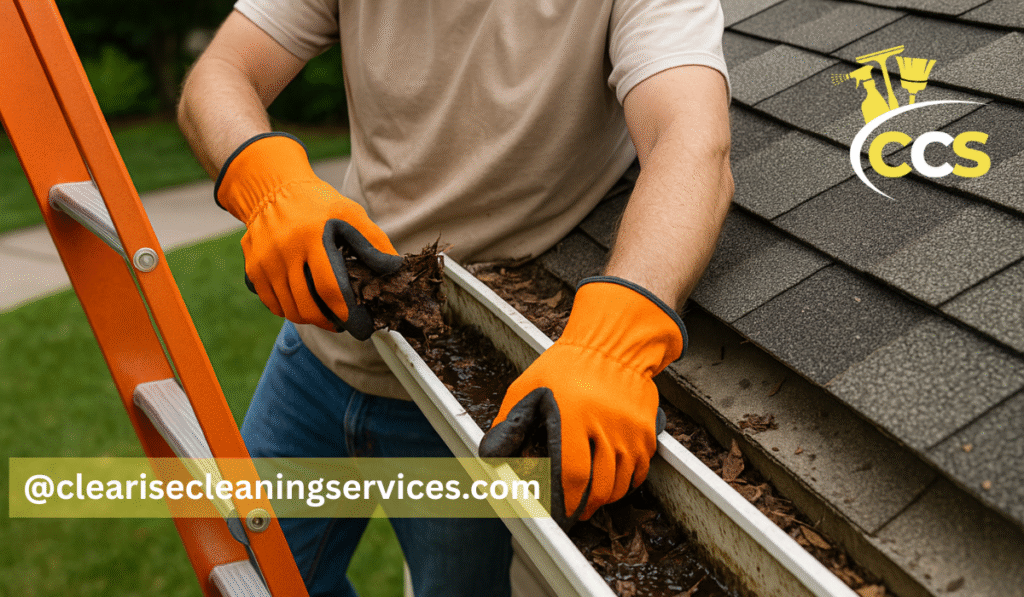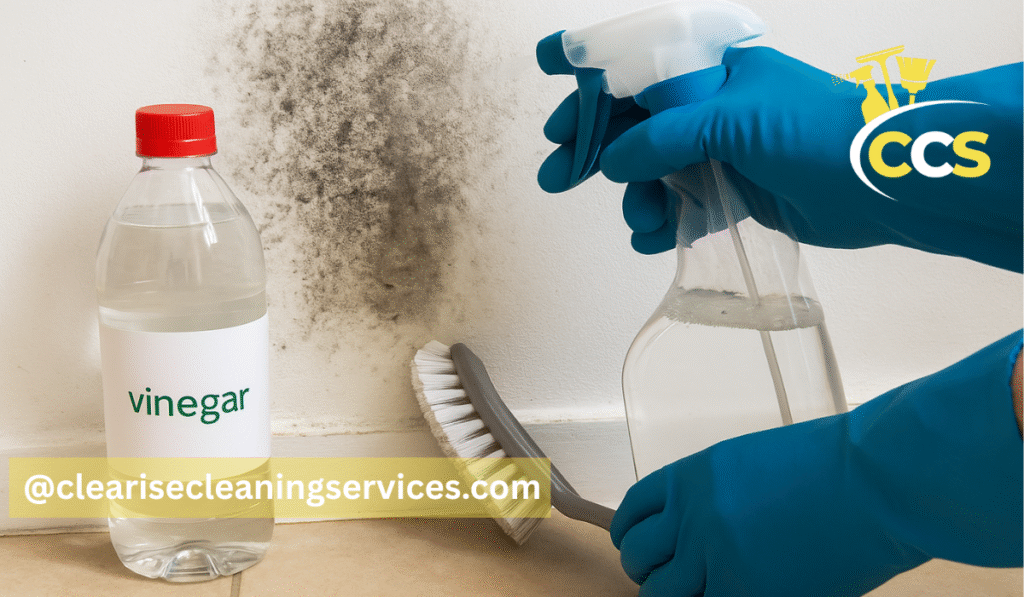If you own a home, keeping your gutters clean is more important than many people realize. A clogged gutter can lead to water damage, roof leaks, foundation issues, and even pest problems. That’s why understanding the real price of this service matters—not just for budgeting, but also for knowing when a quote is fair and when you might be overpaying.
Gutter cleaning typically involves more than just scooping out leaves. Professionals often clear out all debris, flush the downspouts to make sure water flows freely, and may even do a quick inspection to spot loose sections or potential repairs.
One of the most common questions homeowners ask is: how much does gutter cleaning cost? The answer isn’t always simple because prices vary based on house size, number of stories, gutter length, and location. Still, knowing the typical price ranges can help you make better decisions.
In this guide, you’ll learn everything you need to know about gutter cleaning costs. We’ll break down the average prices, explain the factors that affect them, compare DIY vs professional options, and share expert-backed tips for saving money while keeping your home safe.
Average Costs & Pricing Benchmarks
When asking “how much does gutter cleaning cost,” most homeowners want a clear number they can plan for. While the exact price depends on your home and location, industry data gives us some reliable benchmarks.
National Averages
On average, professional gutter cleaning costs between $120 and $250 per visit in the U.S. For a typical single-story home, the bill often falls closer to the lower end, while larger or multi-story houses push costs higher. Some services charge a flat minimum fee (often around $100), even if the job is small.
Cost Per Linear Foot
Many companies calculate price based on the length of your gutters. The average rate is $1.00–$2.00 per linear foot. For example, a home with 150 feet of gutters might cost $150–$300, depending on the condition and difficulty.
Two-Story and Three-Story Homes
Height is a major factor.
- Two-story homes often cost 25%–40% more than a single story because of extra equipment and safety risks.
- Three-story homes can cost significantly more, sometimes $300–$500 per cleaning.
Hourly and Regional Pricing
Some contractors charge by the hour, usually $50–$90 per hour per worker, especially when the condition of the gutters makes pricing unpredictable. Location also plays a role: urban areas with higher labor costs typically see higher rates, while rural areas may be less expensive.
Budget and Promotional Rates
You may see ads like “$99 gutter cleaning near me.” While these offers can be legitimate, they often apply only to smaller single-story homes, or they may exclude important steps like flushing downspouts or removing debris. Always confirm what’s included before booking.
What Drives the Cost of Gutter Cleaning?
The cost of gutter cleaning isn’t one-size-fits-all. Several factors can raise or lower the price, and understanding them helps you know why one quote might be higher than another.
1. Length of Gutters
The more guttering your house has, the more work is required. A small cottage with 100 feet of gutters may cost much less than a large two-story home with 250+ feet. Most pros calculate their base rate per linear foot.
2. Number of Stories / Height
Cleaning a single-story home is faster and safer. Once ladders or scaffolding are needed for a second or third story, prices climb. Two-story homes often cost 25–40% more, while three-story homes may double the price.
3. Roof Pitch and Accessibility
A steep roof, complex angles, or obstacles like trees and landscaping make it harder to reach gutters. Extra time and safety equipment add to the bill.
4. Condition of Gutters
If your gutters haven’t been cleaned in years, expect higher costs. Heavy clogs, plant growth, or animal nests require more labor than routine maintenance.
5. Downspout Flushing
Basic cleaning may only remove visible debris, but flushing downspouts is often an add-on. Since clogged downspouts are a major cause of overflow, most homeowners choose to include this service.
6. Gutter Type and Material
Some materials, like copper or steel gutters, require more careful handling, which can increase costs slightly. Standard aluminum gutters are quicker to clean.
7. Add-On Services
Minor repairs (resealing seams, tightening brackets), removal of gutter guards, or hauling away debris may add $20–$100 to the total.
8. Seasonal Timing
Prices can rise in peak seasons, especially in late fall when leaves drop and demand spikes. Booking off-season may save you money.
9. Location and Labor Rates
Where you live matters. Homeowners in cities with higher labor costs often pay more, while rural areas may have lower prices but fewer providers.
10. Insurance and Safety Requirements
Reputable companies carry insurance, which adds to their operating costs but protects you from liability. Cheaper “handyman” quotes may not include this coverage, which could be risky.
Cost by Scenario: Real-World Examples
While averages are helpful, most homeowners want to know what it will cost for their home. Here are the most common scenarios:
1. Cost to Clean Gutters on a Single-Story Home
- Typical price: $120–$200
- Why cheaper: easy access, minimal ladder work, shorter gutters.
- Best for: small to medium-sized homes with simple rooflines.
2. Cost to Clean Gutters on a Two-Story House
- Typical price: $200–$300
- Why higher: more height means longer ladders, extra safety gear, and added time.
- Note: if trees surround the house, expect the higher end of this range.
3. Cost to Clean Gutters on a Three-Story House
- Typical price: $300–$500+
- Why higher: working at this height requires specialized equipment. Insurance and liability costs are also factored in.
- Sometimes priced per hour if the job is unpredictable.
4. Cost Per Hour
- Standard rates: $50–$90 per hour per worker
- Used when: the gutter condition is unknown, there’s heavy clogging, or unusual access issues.
5. Cost Per Linear Foot
- National average: $1.00–$2.00 per linear foot
- Example: 150 feet of gutters = $150–$300.
- Simple way to calculate with a tape measure or builder’s plan.
6. Cost Per Square Foot of Home
- Some companies price based on house size.
- Example: A 2,000-square-foot home might cost around $150–$250.
- Works best as a rough estimator, but less precise than linear-foot pricing.
7. “$99 Gutter Cleaning Near Me” Deals
- These promos usually apply to small, single-story homes.
- May exclude downspout flushing or debris removal.
- Tip: always check what’s included before booking.
8. Using Gutter Cleaning Cost Calculators
- Many home service websites now offer free calculators.
- You enter gutter length, number of stories, and condition.
- They provide an estimate within seconds, helping you budget before calling contractors.
DIY vs Hiring a Professional
When homeowners ask “how much does gutter cleaning cost,” many also wonder whether it’s cheaper to just do it themselves. The answer depends on safety, skill, and time.
1. DIY Gutter Cleaning
Pros:
- Lower direct cost (no labor fees)
- Flexible timing—you can do it when convenient
- Good for single-story homes with safe ladder access
Cons:
- Requires tools: sturdy ladder, gloves, gutter scoop, hose, possibly safety gear
- Risk of injury from ladder falls (a common ER cause)
- Time-consuming, especially for larger homes or clogged gutters
- No professional inspection or repairs included
Typical DIY costs:
- Ladder rental/purchase: $80–$300
- Tools & safety gear: $20–$100
- Your time and effort
2. Hiring a Professional
Pros:
- Safe—pros use proper ladders, harnesses, and insurance
- Faster and more efficient
- Includes extras like flushing downspouts, small repairs, or inspection
- Peace of mind: liability and safety covered
Cons:
- Higher upfront cost ($120–$300 average)
- Must schedule an appointment
- Quality can vary—need to check reviews and insurance
3. Hybrid Approach
Some homeowners do light cleaning (scooping leaves from easy-to-reach gutters) and hire pros once or twice a year for full service, especially for upper stories or hard-to-reach areas.
4. Expert Insight
Most contractors warn that the savings from DIY aren’t worth the risk if your home has more than one story. A single slip from a ladder can result in serious injury, while pros are trained and insured to handle the height safely.
How to Get Accurate Quotes (and What to Ask Contractors)
Since gutter cleaning costs vary, getting a few quotes is the best way to know if you’re paying a fair price. But not all quotes are equal—what’s included (or left out) can change the final bill.
1. Ask for an Itemized Breakdown
Request a detailed estimate that shows:
- Labor costs
- Debris removal or hauling fees
- Downspout flushing
- Small repairs (tightening brackets, resealing joints)
This prevents surprises on the final invoice.
2. Confirm the Pricing Method
Companies may charge by:
- Linear foot ($1.00–$2.00 per foot)
- Hour ($50–$90 per hour per worker)
- Flat rate (often $120–$250 minimum per visit)
Knowing which model they use helps you compare fairly.
3. Check for Insurance and Licensing
Always ask if they carry liability insurance and worker’s comp. This protects you if an accident happens on your property. Contractors who cut corners here may offer lower prices, but they put you at risk.
4. Clarify What’s Included
Some “cheap” quotes exclude flushing downspouts, cleaning roof valleys, or removing gutter guards. Ask specifically what’s included in the price.
5. Ask for Before-and-After Photos
Reputable companies often provide photos to prove the work was done. This is especially helpful if you weren’t home during the cleaning.
6. Compare at Least 2–3 Quotes
Even in the same town, prices can vary widely. Comparing ensures you’re not overpaying—or falling for a too-good-to-be-true lowball offer.
7. Watch Out for Unrealistic Deals
Ads like “$99 gutter cleaning near me” may look attractive but often:
- Apply only to very small, single-story homes
- Exclude extras like downspout flushing
- Act as a “bait price” to upsell once the contractor is onsite
Ways to Reduce or Optimize Gutter Cleaning Cost
Nobody wants to overspend on maintenance, but skipping gutter cleaning can cost far more in water damage. The good news is, there are smart ways to keep costs down while still protecting your home.
1. Stick to a Regular Schedule
Cleaning your gutters at least twice a year (spring and fall) keeps debris from building up. Routine maintenance takes less time, which means lower costs per visit compared to heavily clogged systems.
2. Install Gutter Guards or Screens
While gutter guards don’t eliminate the need for cleaning, they reduce how often it’s required. Over several years, the savings in reduced service calls can balance out the installation cost.
3. Do Light Cleanups Yourself
If you’re comfortable with a small ladder, you can remove loose leaves from easy-to-reach areas. This makes the professional cleaning quicker (and sometimes cheaper). Leave the higher or riskier work to the pros.
4. Book During Off-Peak Times
Fall is the busiest—and most expensive—time for gutter cleaning. Scheduling in late winter or early summer, when demand is lower, may save you 10–20%.
5. Bundle Services
Many companies also offer roof cleaning, pressure washing, or window cleaning. Bundling multiple services often gets you a discount.
6. Sign Up for Annual Contracts
Some providers offer maintenance plans with two or three visits per year. These contracts usually come at a lower per-visit rate and guarantee you won’t miss a season.
7. Negotiate for Loyalty Discounts
If you find a trustworthy contractor, stick with them. Long-term customers often get priority scheduling and better pricing than one-time clients.
Warning Signs, Risks & Hidden Costs
While gutter cleaning seems straightforward, there are hidden costs and risks that homeowners should know before hiring a service—or attempting it themselves.
1. Hidden Repair Costs
During cleaning, professionals may find:
- Loose or sagging gutters
- Cracked seals or leaky joints
- Rust or corrosion in metal gutters
- Damaged fascia boards from long-term overflow
These repairs can add $50–$250+ to your bill, depending on the extent of damage.
2. Risks of Hiring Uninsured Contractors
A very low price might mean the contractor is not insured. If they fall or damage your property, you could be responsible for medical bills or repairs. Always confirm proof of insurance.
3. Safety Hazards of DIY
Falls from ladders are one of the most common home-related accidents. Even experienced homeowners underestimate how risky it is, especially when reaching second- or third-story gutters.
4. Overlooked Services That Add Up
Some companies charge extra for:
- Flushing downspouts
- Hauling away debris
- Removing and replacing gutter guards
- Cleaning roof valleys
If these aren’t included in the base price, they can raise your total bill unexpectedly.
5. Long-Term Cost of Neglect
Skipping gutter cleaning altogether may save money short-term, but clogged gutters can cause water to:
- Damage your roof and shingles
- Rot fascia boards
- Flood basements or damage foundations
- Stain siding and landscaping
Repairing these issues can cost thousands of dollars, making routine cleaning the far cheaper choice.
Conclusion
So, how much does gutter cleaning cost? On average, homeowners pay between $120 and $300 per cleaning, though prices vary based on gutter length, number of stories, condition, and location. The biggest cost drivers are accessibility, debris buildup, and whether extras like downspout flushing or minor repairs are included.
The key is to get multiple quotes, check for insurance, and confirm exactly what’s covered in the price. Don’t be swayed by “too good to be true” deals, and don’t delay cleanings—neglect often leads to far more expensive water damage.
👉 Final advice: plan ahead, stick to a cleaning schedule, and use local quote tools or calculators to budget for your home. Regular gutter maintenance is one of the simplest and most cost-effective ways to protect your property.
FAQs
Is “$99 Gutter Cleaning Near Me” Realistic?
Sometimes—but usually only for small, single-story homes with very little debris. These offers often exclude downspout flushing or disposal. Always confirm what’s included before booking.
Does A Gutter Guard Eliminate All Cleaning?
No. Gutter guards reduce debris buildup but don’t stop it completely. You’ll still need occasional cleaning, though less often.
Can You Estimate Gutter Cleaning Cost From Photos Or Video?
Yes, many companies now accept photos or video walkthroughs to provide quotes. It’s not as accurate as an onsite inspection, but it can give a fair ballpark estimate.
Is It Cheaper To Replace Gutters Instead Of Repeatedly Cleaning?
Not usually. Cleaning costs $120–$300 on average, while replacing gutters costs thousands. Replacement is only worth it if your gutters are old, damaged, or improperly installed.
How Often Should Gutters Be Cleaned?
Most homes need cleaning twice a year—in spring and fall. If you live under heavy tree cover, you may need quarterly cleanings.
What Is The Minimum Cost Any Company Will Accept?
Most professional companies charge at least $100–$120 as a service minimum, even for very small jobs. This covers labor, travel, and overhead.
Can You Clean Gutters In Winter Or Snow Conditions?
Yes, but it’s more difficult and sometimes unsafe. Ice and snow make ladders slippery, and frozen debris is harder to remove. Most pros recommend cleaning in late fall before freezing weather sets in.
Disclaimer: This article is intended for general informational purposes only. The gutter cleaning cost ranges, examples, and tips provided here are based on industry research, publicly available data, and average homeowner experiences. Actual prices may vary depending on location, home size, contractor rates, seasonal demand, and the condition of your gutters. Always obtain multiple quotes from licensed and insured professionals in your area before making any hiring decision. The author and publisher are not responsible for any actions taken based on the information in this guide.
Thanks for visiting Clearise Cleaning Services! Discover more helpful tips and expert cleaning insights by exploring our related categories.




